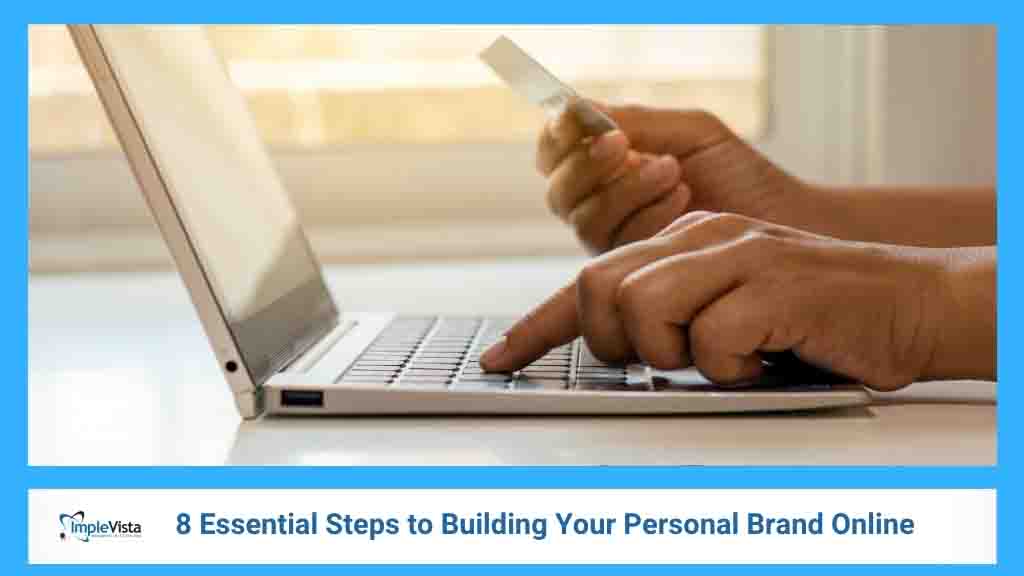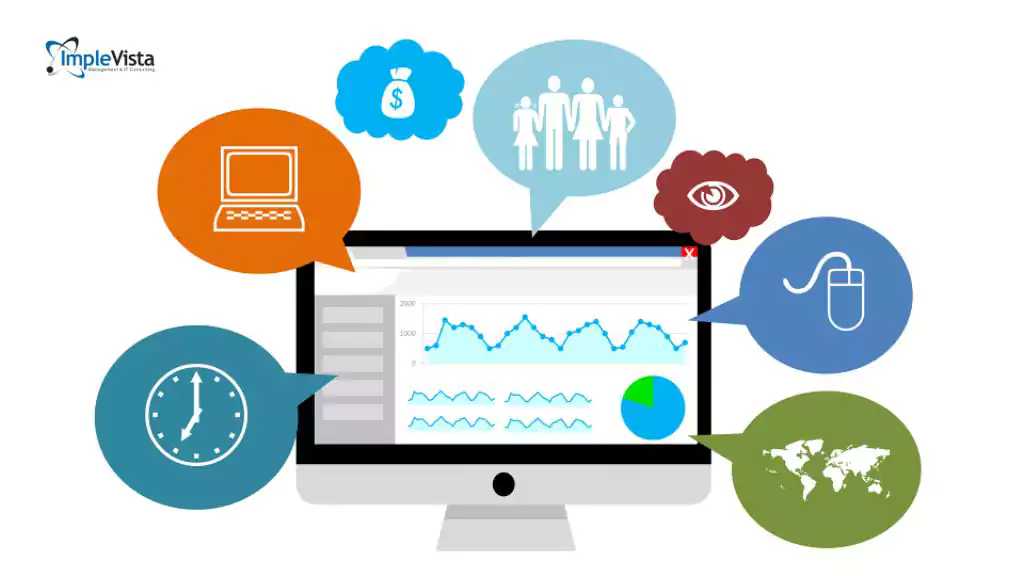Building your personal brand online is crucial in today’s digital world. No matter if you’re an entrepreneur, job seeker, or freelancer, your online presence shapes how others perceive you. A strong personal brand “positions you as a thought leader, builds trust and credibility, and expands your professional network”. In essence, your personal brand is your unique professional identity – a digital reputation made up of your skills, experience, and values. By following these 8 steps, you’ll learn how to define and amplify that identity so you stand out and attract opportunities online.
8 Essential Steps to Building Your Personal Brand Online
1. Identify Your Target Audience and Niche
Before anything else, pinpoint who you want to reach. An effective personal brand speaks to a specific audience. Are you targeting potential employers, clients, peers, or industry influencers? List the people whose needs and values align with your expertise. This clarity lets you tailor your message and content.
For example, if your audience is tech startup founders, highlight innovation and problem-solving in your content. Research where your audience hangs out online (LinkedIn, industry forums, etc.) so you can meet them there. By speaking directly to a defined group, your brand will resonate more and feel authentic.
2. Define Your Unique Value Proposition (UVP)
Next, figure out what makes you different. Your unique value proposition is the foundation of your personal brand. List your core skills, strengths, accomplishments, and passions. Ask yourself: What problems can I solve better than anyone else? Your UVP might be a specific expertise, a mix of skills, or a fresh perspective you bring.
Write a concise statement that captures this – for example, “Helping startups grow by providing clarity, efficiency, and strategic insight.” This UVP will guide all your branding decisions. When opportunities arise, your UVP is your answer to “why should I follow or hire you?”
3. Craft Your Brand Story and Message
Your personal brand needs a compelling narrative. Craft a cohesive brand story that ties together your UVP and journey. Start by outlining the steps that led you to where you are: key projects, challenges you overcame, and lessons learned. Make it relatable and authentic – don’t just list achievements. Share why you chose your field and what drives you. For example, explain a turning point when you realized your mission or a mentor who inspired you.
This story becomes the emotional core of your brand and gives context to your skills. As you share it (in your About page, LinkedIn summary, or interviews), keep the messaging consistent. Reiterate your core values and purpose so that every post or bio reinforces the same themes. With a strong story, your personal brand feels genuine and memorable.
4. Establish a Consistent Visual Identity and Voice
Visuals are a key part of branding. Maintain consistency in how you look and sound online. Use a professional headshot or logo as your profile picture across all platforms so people recognize you instantly. Pick 2–3 brand colors and fonts, and use them in your website, resume, and social headers. This visual consistency “reinforces your brand and makes it more recognizable”.
Likewise, write in a consistent tone – whether you’re friendly, authoritative, or creative – and stick to it. For example, if you use a warm, conversational voice in one LinkedIn post, do the same in your newsletter or tweets. This creates trust and familiarity. Even a simple logo or stylized signature can help.
As Digital Implevista explains for companies, a “well-designed logo that reflects your values” is critical for brand identity. For your personal brand, this means choosing visual elements (logo, images, color scheme) that embody your personality. The goal is that someone glancing at your profiles instantly gets the vibe of your brand.
5. Build a Robust Online Presence (Website, LinkedIn, SEO)
With your identity defined, create and optimize your key online channels. Start with LinkedIn: craft a clear headline and summary that capture your strengths. Use the summary (About) section to tell your brand story and highlight key accomplishments. Add work samples or portfolio links to showcase your expertise.
Next, consider a personal website or blog as the central hub for your brand. A professional site can include your bio, resume, portfolio, testimonials, and links to social media – all in one place. Make sure it’s mobile-friendly and fast-loading.
Optimizing for search (SEO) is also important. Use keywords related to your field throughout your website and profiles so people can find you online. Implevista notes that “visibility in search engines is a key driver of online success,” and SEO-optimized content can “improve your search engine rankings, attract organic traffic, and increase your online presence.”.
This means writing articles or blog posts using relevant terms, and filling out LinkedIn profiles with industry keywords. Finally, select additional social platforms where your audience is active (e.g. Twitter/X for quick insights, Instagram for visuals, etc.) and maintain profiles there too. By building a strong, SEO-friendly presence on the right channels, you ensure your personal brand can be discovered and makes a great first impression.
6. Leverage Online Brand Marketing Strategies
Once your channels are in place, promote your brand strategically online. This is where online brand marketing comes in. Think of it as using marketing tactics to amplify your personal brand. For example, regularly post on social media (content, tips, stories) that align with your UVP and audience interests.
Share your blog posts, short videos, or infographics to spread your message. Use targeted keywords and hashtags so your content shows up in searches and feeds. Implevista emphasizes that effective content marketing is “about telling your brand’s story, providing value, and building a loyal audience.”.
Paid strategies can also help: you might run a small LinkedIn or Facebook ad campaign to promote a free webinar or guide, targeting the demographics of your audience. Collaborating with industry influencers or guest posting on popular blogs can boost your reach.
Each tactic – whether SEO, social ads, or partnerships – is an example of online brand marketing. The goal is consistent outreach: the more people see and engage with your brand, the stronger it becomes.
7. Create and Share Valuable Content Regularly
Content is king for personal branding. Share your knowledge frequently to position yourself as an expert. This can be blog articles, LinkedIn posts, videos, podcasts, or infographics. The medium doesn’t matter as much as the value you provide. Address common challenges in your industry, comment on trends, or give how-to advice.
Grammarly notes that “consistent content creation… positions you as a unique thought leader”. For example, write a monthly blog post on a relevant topic, and share snippets on social media. You could record a short video series about industry tips, or host a live Q&A online.
Implevista’s content marketing approach underscores producing “high-quality, engaging, and informative content” to attract and engage an audience. Take the time to research what questions your audience has and answer them thoroughly.
Remember SEO: naturally include keywords in titles and body so search engines boost your content. Importantly, maintain consistency: it’s better to publish one great article or video per week than scatter frequent, low-quality updates. Over time, this body of work will accumulate, making your brand more visible and trusted.
8. Engage, Network, and Evolve Your Brand
Finally, stay active and adaptable. Engage with your community by commenting on others’ posts, answering questions in forums, and following up with new connections. Networking both online and offline is essential: Grammarly says networking “allows you to establish yourself as a thought leader,” and connections often lead to referrals and collaborations.
For instance, attend a webinar and connect with speakers on LinkedIn afterward, or join an industry Slack/Discord community and contribute to discussions. These interactions get your name out there and can result in valuable partnerships.
Remember to monitor your brand’s performance. Track metrics like website traffic, social media engagement, and follower growth. Use tools like Google Analytics or LinkedIn/Growth insights to see what content resonates. As one survey highlights, a strong personal brand is always evolving – evaluate and adjust your strategy regularly.
Update your profiles when you gain new skills or roles, and refresh visuals or messaging to stay current. Keep an eye on industry trends and be willing to pivot. For example, if a new platform is gaining your audience’s attention (like a burgeoning social app), learn how to use it. By continuously learning and iterating, you’ll ensure your personal brand remains relevant and compelling.
Building a strong personal brand online is a journey of self-definition, consistent effort, and adaptation. By defining your audience and UVP, crafting an authentic story, maintaining consistent branding, and leveraging digital marketing strategies, you will steadily enhance your online reputation and visibility. Start implementing these steps today: create a plan for content, set up your profiles, and reach out in your networks.
If you’re ready to take your personal brand to the next level, contact Implevista for expert guidance on digital marketing and brand-building strategies. Explore our Content Marketing services or SEO solutions to boost your visibility. Don’t forget to subscribe to the Implevista blog for more tips on online brand marketing. You might also enjoy our related article on building a strong brand identity. With the right strategy and support, your personal brand online can open doors to new opportunities and success.
FAQs about building your personal brand online
What is a personal brand?
A personal brand is your unique professional identity and reputation, shaped by your skills, values, and how you present yourself online. It encompasses your bio, social profiles, content, and public image, all of which tell others what makes you stand out in your field. A strong personal brand clearly communicates who you are and why people should pay attention to you.
Why is building your personal brand online important?
In today’s digital age, your online presence is often the first impression you make. A well-crafted personal brand increases your visibility, credibility, and opportunities. For example, one survey found 70% of employers consider a strong personal brand more important than a resume. Being active and consistent online shows expertise and helps others trust and remember you, which can lead to job offers, partnerships, and collaborations.
How do I identify my target audience for my personal brand?
Start by deciding whose needs you want to serve – clients, employers, colleagues, or a specific niche (like startup founders, marketers, etc.). Research where that group spends time online and what content they value. For instance, if you aim at B2B clients, LinkedIn and professional forums may be key. Defining this audience lets you tailor your content and messaging to resonate with them. Creating audience personas (listing demographics and interests) can also help clarify your brand direction.
What is a unique value proposition (UVP) in personal branding?
Your UVP is a concise statement of what makes you different and valuable. It highlights the unique mix of skills, experience, and perspective you bring. To define it, list your top strengths and how they solve problems for others. Then craft a short description, such as “I help small businesses grow by simplifying their marketing with data-driven insights.” As Grammarly notes, a good UVP “differentiates you from others in your field” and guides all your branding. It ensures that people immediately understand what you offer.
How can I improve my personal brand’s online presence?
Focus on optimizing key channels: create a professional LinkedIn profile with a clear headline and engaging summary. Build a personal website or blog as a hub where you control your narrative. Publish SEO-friendly content so people can find you in Google searches. Use the same photo, bio, and visual theme across all profiles for consistency. Also, stay active by posting updates, sharing industry news, and engaging in relevant online communities. Over time, these efforts boost your search visibility and help your audience discover your brand.
What role does content creation play in personal branding?
Content creation is crucial—it’s how you demonstrate your expertise and provide value to your audience. Regularly writing blog posts, making videos, or sharing insights positions you as a knowledgeable resource. For example, publishing an in-depth article or hosting a webinar on a trending topic in your field builds authority. Implevista emphasizes that content marketing is not just promotion but “telling your brand’s story” and educating your audience. Consistently delivering high-quality content keeps your brand relevant and helps you earn your audience’s trust over time.
How does networking help build a personal brand?
Networking (both online and in person) expands your reach and credibility. When you attend industry events, join professional groups, or simply engage with peers on social media, you’re exposing your brand to new audiences. Engaging in conversations, answering questions, and collaborating with others shows your expertise. According to personal branding guides, networking “allows you to establish yourself as a thought leader”, leading to referrals and opportunities. Even simple actions like commenting on LinkedIn posts or sending a friendly introduction message can make your brand more visible and trusted.
What is online brand marketing?
Online brand marketing refers to using digital channels and strategies to promote and grow your personal brand. This includes social media marketing, SEO (optimizing search engine results), content marketing, email newsletters, and even paid ads. For example, using LinkedIn posts and targeted keywords to reach your audience, or running Facebook ads to showcase a free webinar, are online marketing tactics. The goal is to amplify your brand’s visibility and engagement online. As a concept, it ensures you’re not just creating great content, but also actively distributing and promoting your brand message across the right platforms.
How can I measure the success of my personal brand?
Track metrics that reflect your goals. Common indicators are website traffic (how many people visit your site), social media followers and engagement (likes, comments, shares), and search ranking for your name or keywords. You can use Google Analytics to see referral sources and visitor behavior, and social media analytics for audience growth. Also note tangible outcomes: Are you getting more job offers, speaking invitations, or inquiries about your services? Regularly reviewing this data and feedback will show you what’s working and where to improve. If a certain type of content gets lots of engagement, do more of it. This data-driven approach is similar to how Implevista refines strategies based on analytics.
What mistakes should I avoid when building my personal brand?
Common pitfalls include inconsistent messaging, neglecting any channel (e.g. having an outdated LinkedIn profile), and trying to be everything to everyone. Stick to your defined audience and UVP. Avoid unprofessional content – remember that everything you post reflects on you. Don’t ignore feedback or analytics; if something isn’t resonating, adjust your approach. Also, avoid being overly promotional; focus on providing value first. Finally, be patient – personal branding takes time. Consistency and authenticity are key. By staying true to your defined identity and avoiding these mistakes, you’ll build a stronger, more trustworthy brand over time.





